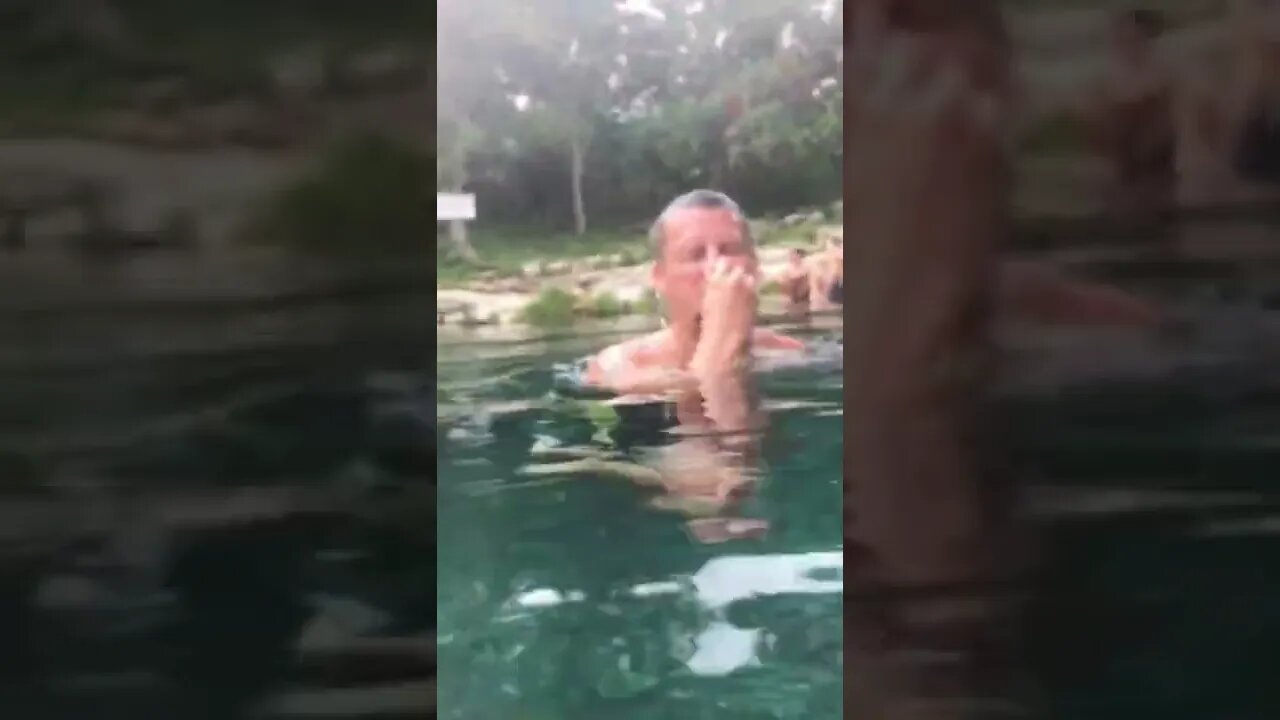Premium Only Content

Cenote Xlacah in Mérida, Mexico #cenote #xlacah #dzibilchaltun #shorts
This natural swimming hole was amazing and seemed to have no bottom. Crystal clear water, fish all around. This was a great trip for our 2nd anniversary. And yes I hold my nose underwater.
WHILE THE MAJORITY OF CENOTES—WATER-FILLED sinkholes that dot the Yucatán Peninsula—are dramatically located underground, a few are at ground level. The Xlacah cenote is one such place, making it one of the few swimming holes where you can go for a dip while looking out over Maya ruins.
The Xlacah cenote is located in the middle of the archaeological zone of Dzibilchaltún, and it’s believed to have been the main freshwater source for the ancient Maya inhabitants of the city. The story of Dizibilchaltún began around 500 BC when the first populations settled here, partly enticed by the presence of the cenote, which was an endless source of freshwater. The surface area of the pool is only part of a large water system that encompasses underground tunnels and a maximum depth of almost 150 feet. The ancient city reached its apex between the third and sixth centuries, and during this period many wells were dug throughout the area.
Notable among the Maya architecture at the site is the presence of a Spanish open chapel. These open chapels were commonly built out of rubble taken from indigenous temples in order to establish the dominance of Christianity over the native pre-Hispanic beliefs. Dzibilchaltún’s open chapel is one of the oldest found in Mexico, dating back to 1592.
Xlacah has been explored by a few diving expeditions, the first in 1956. During these explorations, archaeological vestiges such as carved bones, clay fragments, and wooden artifacts were found. It is clear from these finds that Xlacah, like many other cenotes in the Yucatán, not only served a practical role for its freshwater but was also part of the belief systems and cosmogony of the local inhabitants.
Know Before You Go:
The Xlacah cenote (also spelled Xlakah) is located inside the Dzibilchaltún Archaeological Site, near Mérida. The site is open daily (except holidays) from 8 a.m. to 5 p.m. Access costs differ for Mexican citizens with ID (MXN $97) and foreigners (MXN $120). A population of small fish lives in the cenote. Similar to those in fish spas, they are prone to biting softly to feed on dead skin cells. To maintain the ecosystem of the cenote, it is strongly advised to only use biodegradable skin products if going for a dip.
[ source: https://www.atlasobscura.com/places/cenote-xlacah ]
⬇️ _*SEE ALSO*_ ⬇️
🏠 _https://wadesworld.tv_
💲 _https://patreon.com/wadesworldtv_
🔗 _https://facebook.com/wadesworldonline_
🔗 _https://instagram.com/wadesworldtv_
🔗 _https://tiktok.com/@wadesworld.tv_
🔗 _https://twitter.com/wadesworldtv_
🫶 *Thank you for supporting the channel!* 🫶
-
 1:17:13
1:17:13
Redacted News
3 hours agoTRUMP IS BURNING IT ALL DOWN AND DEMOCRATS WANT HIM IMPEACHED AGAIN, USAID ROT GOES DEEP | Redacted
105K218 -
 52:23
52:23
Candace Show Podcast
4 hours agoUPDATE! Taylor Swift Goes Full Dragon Against Blake Lively | Candace Ep 144
75.2K133 -
 LIVE
LIVE
LFA TV
23 hours agoCorruption Like You Never Imagined | TRUMPET DAILY 2.6.25 7pm
592 watching -
 LIVE
LIVE
theDaily302
10 hours agoThe Daily 302- JJ Carrell
114 watching -
 LIVE
LIVE
Common Threads
2 hours agoLIVE DEBATE: Is Elon Musk Going Too Far with Spending Cuts?
350 watching -
 10:49
10:49
Misha Petrov
1 hour agoIllegal Immigrants Are Being Deported… and They’re OUTRAGED
4 -
 2:01:17
2:01:17
Revenge of the Cis
5 hours agoEpisode 1442: Conservative TM
36.1K5 -
 54:05
54:05
Game On!
6 hours ago $0.52 earned5 Biggest Super Bowl BET Mistakes You Might Be Making
13.1K3 -
 15:27
15:27
BlackDiamondGunsandGear
5 hours agoTOP 5 CCW / Whats your Favorite? #EDC
15.1K1 -
 1:02:21
1:02:21
In The Litter Box w/ Jewels & Catturd
1 day agoSCHUMER ENDORSES DOGE | In the Litter Box w/ Jewels & Catturd – Ep. 736 – 2/6/2025
77.7K45